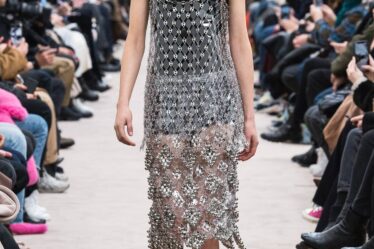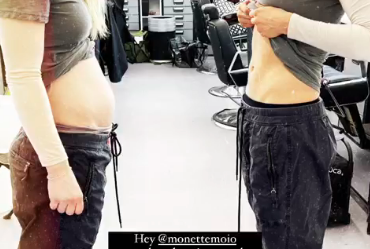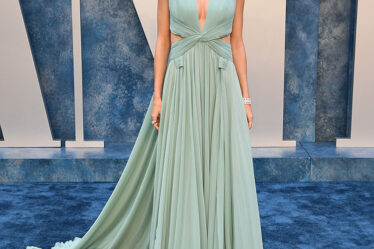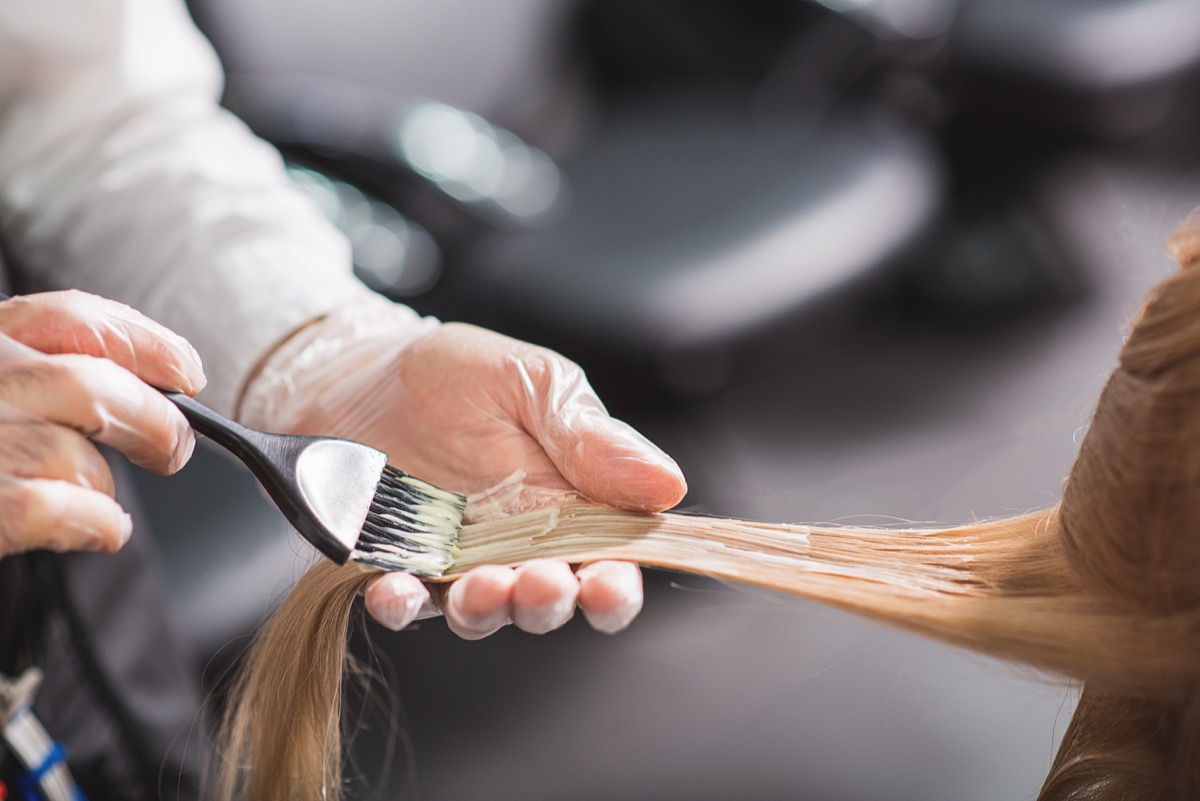
At first, blending your gray hairs is easy. You can use a glaze, root touch-up, or color-depositing dry shampoo. But as the grays continue to grow, things become harder—and, at a certain point, you’ll likely want to opt for either highlights or dye (or embrace those silver locks fully, of course). But deciding which method and hue to choose is the challenge. Do you stay true to your roots or choose something completely different? Go for all-over color or something more piece-y? Here, hair stylists give us the details on lightening your strands to cover your grays. Refreshed and revitalized locks await.
READ THIS NEXT: 5 Secrets for Growing Out Gray Hair, According to Stylists.
Most hair stylists we surveyed noted baby lights as one of the easiest ways to blend grays. “Lighter-colored highlights will help break up the contrast between the light and dark hair because the highlight color is closer to the lighter gray hair color,” says Gregory Patterson, celebrity hairstylist and color and styling expert for Sally Beauty. “This way, the highlight almost serves as a mid-tone bridge between the darker base and the bright gray.”
This method works to an extent for all hair colors but is most effective for those with lighter-colored strands. “The reason for this is the baby lights are closer to the gray hair as well as the base tone, giving it a more blended look,” says Jamie Mazzei, creative director of NuBest Salon & Spa in Manhasset, New York. “For dark bases, we might consider baby lights, but with a darker color instead of blonde.” You’ll get a similar effect of more blended and dimensional color and less of a stark contrast between dark and light.
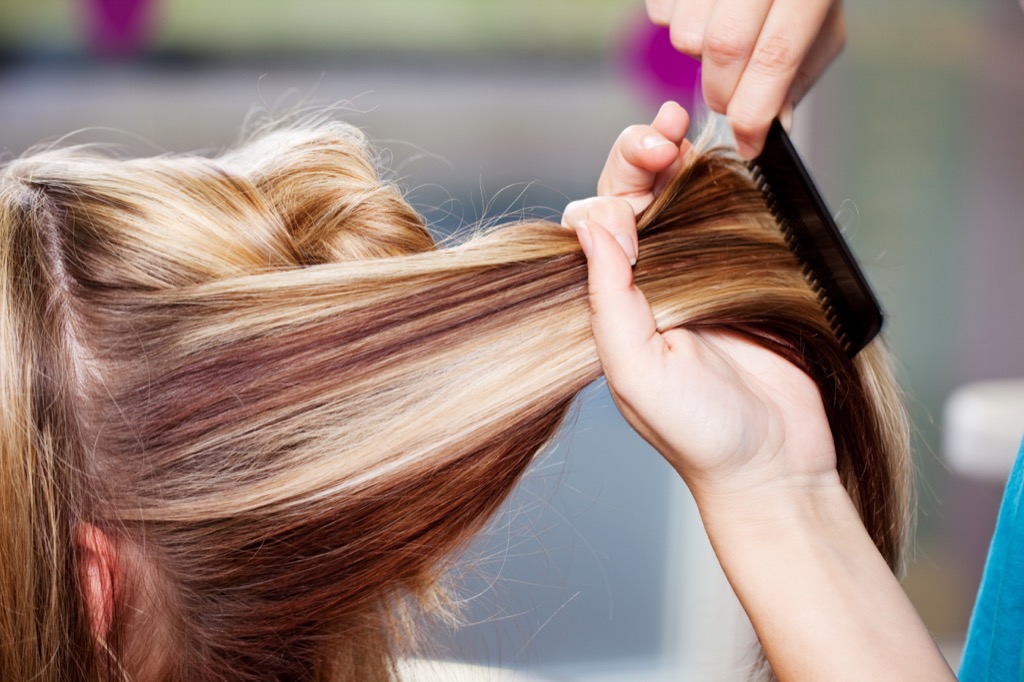
Highlights are baby lights’ larger-surface-area big sister. “If you are just starting to notice grays and you are not ready to color hair, starting with a few highlights to blend the gray is something I often recommend,” says Cindy Marcus, a professional hairstylist in Las Vegas and editor-in-chief of Latest Hairstyles. “This method helps to camouflage the gray hair by adding a contrasting light color. It does not cover gray and will not make them unnoticeable; however, it will make them less visible.”
As with baby lights, the color of your hair will determine the color of your highlights. “For example, if you are a light brown shade, adding pale blonde highlights will conceal gray hair best; however, if your natural shade is very dark, you do not want to add such a light highlight if it does not suit you,” Marcus adds. “If this is the case, you can add a caramel highlight to your hair and it will have the same effect, giving the eye another color similar to the gray coming in.” The dimensional color is flattering and volumizing, too.
READ THIS NEXT: The 5 Best Hairstyles for Gray Hair, According to Experts.

Both baby lights and highlights are subtle—and a money piece is anything but. To achieve this look, your stylist will add a bright highlight to frame the face on both sides. “A money piece is a great way to keep the light and bright as a focal point on the face via your parting,” says Patterson. “This works because most women will see the slightest hint of gray right at the parting, so adding a bold piece there will trick the eye into thinking ‘oh, she’s got a fresh blonde.'” Ask your colorist if this is a viable option for you.
For more beauty advice delivered straight to your inbox, sign up for our daily newsletter.
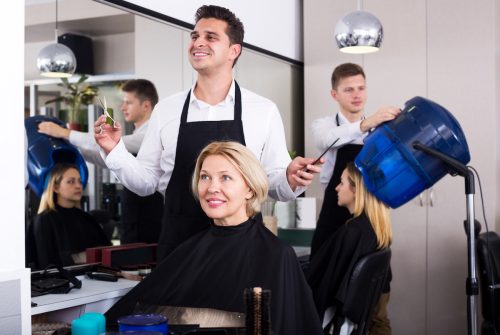
Dying your hair completely will always cover grays. And if you choose a lighter color, your newly gray hair will blend more easily with your dyed hair. However, there are a few things you’ll want to consider first, including the percentage of grays you currently have. “If my client is over 50 percent gray, meaning more gray than pigmented hair, I like to have a conversation about what the grow-out will look like,” says Mazzei. “If you have a high percentage of gray, you will notice a line when it grows out.” According to Mazzei, this bothers some clients, while it doesn’t phase others. If you think you’ll be peeved, you may want to opt for those aforementioned highlights or baby lights instead. The grow-out with those techniques will be softer and less noticeable.
Depending on your natural color, going blonde could take a while, too. You’ll want to work with your stylist to devise a color plan and remember that patience is a virtue in all lightening processes. Once your look is complete, though, you’ll have light, bright hair that blends grays with ease.

